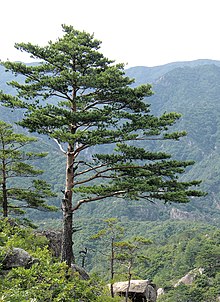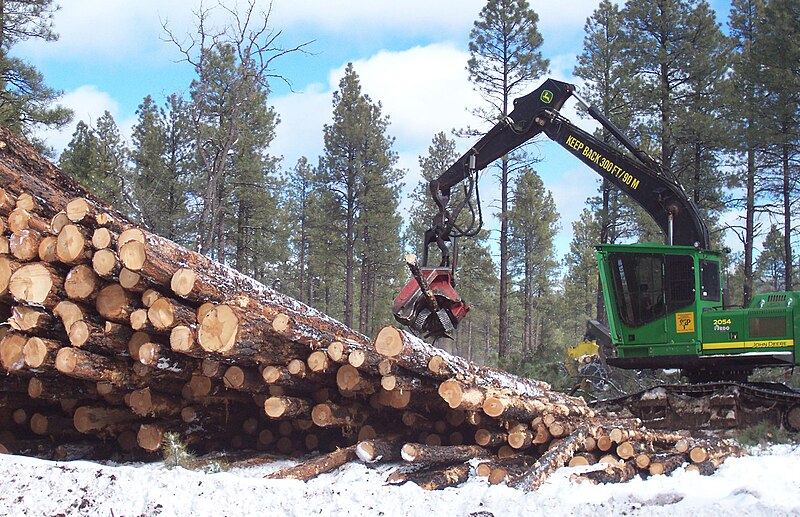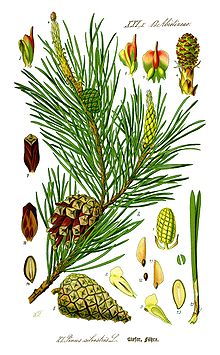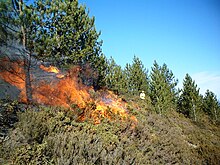

Hi Everybody! Welcome to the front porch at Kates Cabin Bird Sanctuary.
This is Hummingbird Wall with my Windows on the World! In August there will be a feeder in each window. As this is an open air porch, the hummingbirds fly through plus in and out of the lattice and windows! This space is my most favorite spot on the grounds to hang out! This is why I want to share it with You. To give you ideas about creating outdoor spaces for yourself and wildlife.
You will see in my photos, that I have built my own stuff. If you can afford it, You can have things built for You!
My very first love is Trees. I bought this one acre with big trees already growing here. Then I have added so many trees over 20 years, I have nowhere left to plant!!! Because I have so many trees, I have so many birds!! My style here is low profile country garden, where everything blends into the natural landscape.
Just open your mind to what environment you want surrounding You.
Think about what you can build for yourself. Think about the wood You use.Plant trees to replace what you have taken, and then some more.
Think about the Trees. In all of Space that we have looked at, there are no trees anywhere else but Earth. They make oxygen for us to breathe. If we cut them all down, we will have no air to breathe. In fact, we all need to plant many trees because they are destroyed at an alarming rate.
Anyway, many things to think about in this post. Enjoy Your Photostudy. It is of critters on my Porch!
Red Hornet
red hornet
2 tiny white butterflies
bird on tree branch
new crape myrtle bloom outside garden window
Dragonfly
Dragon Fly
Mimosa Flower
mating walkingsticks
mating walkingsticks
new growing tips on top of Pine Trees
The Tall Pine Trees
http://en.wikipedia.org/wiki/Pine
Pine
From Wikipedia, the free encyclopedia
Pines are trees in the genus Pinus (
| Pine tree | |
|---|---|
 | |
| Japanese Red Pine (Pinus densiflora), North Korea | |
| Scientific classification | |
| Kingdom: | Plantae |
| Division: | Pinophyta |
| Class: | Pinopsida |
| Order: | Pinales |
| Family: | Pinaceae |
| Genus: | Pinus L. |
| Subgenera | |
See Pinus classification for complete taxonomy to species level. See list of pines by region for list of species by geographical distribution
| |
Etymology
The modern English name pine derives from Latin pinus by way of French pin; similar names are used in other Romance languages. In the past (pre-19th century) they were often known as fir, from Old Norse fyrre, by way of Middle English firre. The Old Norse name is still used for pines in some modern north European languages, in Danish, fyr, in Norwegianfura/fure/furu, Swedish, fura/furu, and Föhre in German, but in modern English, fir is now restricted to Fir (Abies) and Douglas-fir (Pseudotsuga).
[edit]Taxonomy, nomenclature and codification
Main article: Pinus classification
Pines are divided into three subgenera, based on cone, seed and leaf characters:
- Pinus subg. Pinus, the yellow or hard pine group
- Pinus subg. Ducampopinus, the foxtail or pinyon group
- Pinus subg. Strobus, the white or soft pine groups
[edit]Distribution
Pines are native to most of the Northern Hemisphere. In Eurasia, they range from theCanary Islands, Iberian Peninsula and Scotlandeast to the Russian Far East, and in thePhilippines, north to just over 70°N in Norway,Finland and Sweden (Scots Pine) and easternSiberia (Siberian Dwarf Pine), and south to northernmost Africa, the Himalaya and Southeast Asia, with one species (Sumatran Pine) just crossing the Equator in Sumatra to 2°S. In North America, they range from 66°N in Canada (Jack Pine and Red Pine), south to 12°N in Nicaragua(Caribbean Pine). Pines have been introduced in subtropical and temperate portions of the Southern Hemisphere, including Chile, Brazil, South Africa,Tanzania, Australia, Argentina and New Zealand, where they are grown widely as a source of timber. A number of these introduced species have become invasive,[2] threatening native ecosystems.
[edit]Morphology
Pines are evergreen, resinous trees (or rarely shrubs) growing 3–80 m tall, with the majority of species reaching 15–45 m tall. The smallest are Siberian Dwarf Pine and Potosi Pinyon, and the tallest is a 268.35-foot (81.79-meter) tall Ponderosa Pine located in southern Oregon'sRogue River-Siskiyou National Forest.[3]
The bark of most pines is thick and scaly, but some species have thin, flaking bark. The branches are produced in regular "pseudo whorls", actually a very tight spiral but appearing like a ring of branches arising from the same point. Many pines are uninodal, producing just one such whorl of branches each year, from buds at the tip of the year's new shoot, but others are multinodal, producing two or more whorls of branches per year. The spiral growth of branches, needles, and cone scales are arranged in Fibonacci numberratios.[citation needed] The new spring shoots are sometimes called "candles"; they are covered in brown or whitish bud scales and point upward at first, then later turn green and spread outward. These "candles" offer foresters a means to evaluate fertility of the soil and vigour of the trees.
Pines are long-lived, typically reaching ages of 100–1,000 years, some even more. The longest-lived is the Great Basin Bristlecone Pine, Pinus longaeva. One individual of this species, dubbed Methuselah, is one of the world's oldest living organisms at around 4,600 years old. This tree can be found in the White Mountains of California. An older tree, unfortunately now cut down, was dated at 4,900 years old. It was discovered in a grove beneath Wheeler Peak and it is now known as Prometheus after the Greek immortal.[citation needed]
[edit]Foliage
Pines have four types of leaf:
- Seed leaves (cotyledons) on seedlings, borne in a whorl of 4–24.
- Juvenile leaves, which follow immediately on seedlings and young plants, 2–6 cm long, single, green or often blue-green, and arranged spirally on the shoot. These are produced for six months to five years, rarely longer.
- Scale leaves, similar to bud scales, small, brown and non-photosynthetic, and arranged spirally like the juvenile leaves.
- Needles, the adult leaves, which are green (photosynthetic), bundled in clusters (fascicles) of 1–6, commonly 2–5, needles together, each fascicle produced from a small bud on a dwarf shoot in the axil of a scale leaf. These bud scales often remain on the fascicle as a basal sheath. The needles persist for 1.5–40 years, depending on species. If a shoot is damaged (e.g. eaten by an animal), the needle fascicles just below the damage will generate a bud which can then replace the lost leaves.
[edit]Cones
Pines are mostly monoecious, having the male and female cones on the same tree, though a few species are sub-dioecious with individuals predominantly, but not wholly, single-sex. The male cones are small, typically 1–5 cm long, and only present for a short period (usually in spring, though autumn in a few pines), falling as soon as they have shed their pollen. The female cones take 1.5–3 years (depending on species) to mature after pollination, with actual fertilization delayed one year. At maturity the female cones are 3–60 cm long. Each cone has numerous spirally arranged scales, with two seeds on each fertile scale; the scales at the base and tip of the cone are small and sterile, without seeds. The seeds are mostly small and winged, and are anemophilous (wind-dispersed), but some are larger and have only a vestigial wing, and are bird-dispersed (see below). At maturity, the cones usually open to release the seeds, but in some of the bird-dispersed species (e.g. Whitebark Pine), the seeds are only released by the bird breaking the cones open. In others, the seeds are stored in closed ("serotinous") cones for many years until an environmental cue triggers the cones to open, releasing the seeds. The most common form of serotiny is pyriscence, in which a resin binds the cones cones shut until melted by a forest fire.
[edit]Ecology
Pines grow well in acid soils, some also on calcareous soils; most require good soil drainage, preferring sandy soils, but a few (e.g. Lodgepole Pine) will tolerate poorly drained wet soils. A few are able to sprout after forest fires (e.g. Canary Island Pine). Some species of pines (e.g. Bishop Pine) need fire to regenerate, and their populations slowly decline under fire suppression regimes. Several species are adapted to extreme conditions imposed by elevation and latitude (e.g. Siberian Dwarf Pine, Mountain Pine, Whitebark Pine and thebristlecone pines). The pinyon pines and a number of others, notably Turkish Pine and Gray Pine, are particularly well adapted to growth in hot, dry semi-desert climates.[citation needed]
The seeds are commonly eaten by birds and squirrels. Some birds, notably the Spotted Nutcracker, Clark's Nutcracker and Pinyon Jay, are of importance in distributing pine seeds to new areas. Pine needles are sometimes eaten by some Lepidoptera (butterfly and moth) species (see list of Lepidoptera that feed on pines), the Symphytan species Pine sawfly, andgoats.
Uses
Pines are among the most commercially important of tree species, valued for their timber andwood pulp throughout the world. In temperate and tropical regions, they are fast-growingsoftwoods that will grow in relatively dense stands, their acidic decaying needles inhibiting the sprouting of competing hardwoods. Commercial pines are grown in plantations for timber that is denser, more resinous, and therefore more durable than spruce (Picea). Pine wood is widely used in high-value carpentry items such as furniture, window frames, panelling, floors and roofing, and the resin of some species is an important source of turpentine.
Many pine species make attractive ornamental plantings for parks and larger gardens, with a variety of dwarf cultivars being suitable for smaller spaces. Pines are also commercially grown and harvested for Christmas trees. Pine cones, the largest and most durable of allconifer cones, are craft favorites. Pine boughs, appreciated especially in wintertime for their pleasant smell and greenery, are popularly cut for decorations. A number of species are attacked by nematodes, causing pine wilt disease, which can kill some quickly. Pine needles are also used for making decorative articles like baskets, trays, pots, etc. This Native American skill is now being replicated across world. Pine needle handicrafts are made in the US, Canada, Mexico, Nicaragua and India. Pine needles serve as food for variousLepidoptera. See List of Lepidoptera which feed on Pines.
Because pines have no insect or decay resistant qualities after logging, they are generally recommended for construction purposes as indoor use only (ex. indoor drywall framing). This wood left outside can not be expected to last more than 12–18 months depending on the type of climate it is exposed to. It is commonly referred to by several different names which include North American timber, SPF (spruce, pine, fir) and whitewood.
[edit]Food uses
Some species have large seeds, called pine nuts, that are harvested and sold for cooking and baking.
The soft, moist, white inner bark (cambium) found clinging to the woody outer bark is edible and very high in vitamins A and C. It can be eaten raw in slices as a snack or dried and ground up into a powder for use as a thickener in stews, soups, and other foods, such asFinnish pine bark bread (pettuleipä). Adirondack Indians got their name from the Mohawk Indian word atirú:taks, meaning "tree eaters".
A tea made by steeping young, green pine needles in boiling water (known as "tallstrunt" in Sweden) is high in vitamins A and C.

Logging Pinus ponderosa, Arizona, USA

Pinus sylvestris prepared for transport,Hungary
This is a very quick deck construction!!!!
Just Push Play
Example of Having someone build it for You
Just Push Play
Get Outside with Great Ideas!
Just Push Play
Entrance to Kates Cabin (last january)
At the front gate with the little King! This is a feeding station for the birds-seeds and peanuts on ground.
My winter trees (no leaves)
The little King guarding the seed and peanuts!
My electric pole and winter trees!
Hummingbird feeding station on back of Kates Cabin
Ruby Throated Hummingbird (This is Elvis)
He is talking to me (in his language!)
This is his spot at the end of the front porch! I built this big porch just for him! (And Me)!
For those of You who do not have trees, I thought you might enjoy the following videos about trees and humans. Very Interesting Information. Enjoy!
Just Push Play
These people are cutting down dead trees/Just Push Play
These people are making boards from trees/Just Push Play
These people are cutting down live pine trees for lumber/Just Push Play
These people are planting pine trees/Just Push Play
I came across the following historical film while working on this Pine Lumber Page. It was filmed in 1946 (4 years before I was born). This film reflects the mind set of society at that time in history. These people are the most horrible I can imagine. To me, this is worse horror film than any produced in hollywood. I encourage all of You to watch this and change the world so this never happens again. This video made me cry and hurt me in my heart for the loss of these great trees. Just Push Play-
...this is brendasue signing off from Rainbow Creek
See You Next Time!
Goodnight Everybody!
Goodnight Elvis!
Of Course, One More Great Performance!
Just Push Play
O+O
































No comments:
Post a Comment
Hi Everybody! Please say hello and follow so I know you are here! Due to the inconsideration of people trying to put commercials on my blog comment area, I have restricted use of anonymous posts. Sorry that some hurt all.
My public email is katescabin@gmail.com No spammers or trolls